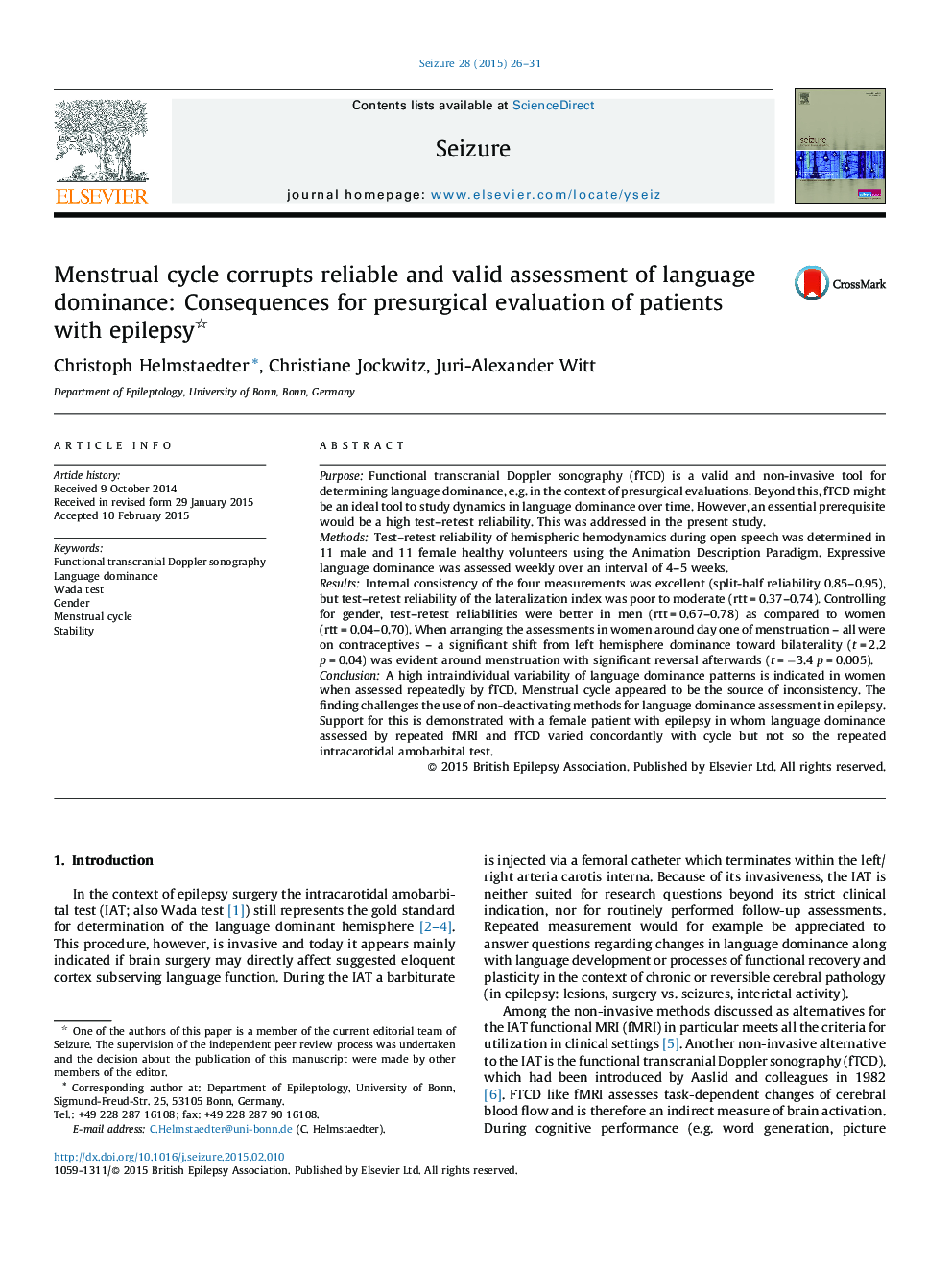| Article ID | Journal | Published Year | Pages | File Type |
|---|---|---|---|---|
| 340437 | Seizure | 2015 | 6 Pages |
•Functional transcranial Doppler like functional MRI may replace language Wada test.•FTCD is easily applied, non-invasive and can be used for serial evaluations.•Language dominance shifts in women corrupt the reliability of FTCD.•Concerns must be raised toward single applications of non-deactivating methods.•The Wada seems to produce more reliable and menstrual cycle independent results.
PurposeFunctional transcranial Doppler sonography (fTCD) is a valid and non-invasive tool for determining language dominance, e.g. in the context of presurgical evaluations. Beyond this, fTCD might be an ideal tool to study dynamics in language dominance over time. However, an essential prerequisite would be a high test–retest reliability. This was addressed in the present study.MethodsTest–retest reliability of hemispheric hemodynamics during open speech was determined in 11 male and 11 female healthy volunteers using the Animation Description Paradigm. Expressive language dominance was assessed weekly over an interval of 4–5 weeks.ResultsInternal consistency of the four measurements was excellent (split-half reliability 0.85–0.95), but test–retest reliability of the lateralization index was poor to moderate (rtt = 0.37–0.74). Controlling for gender, test–retest reliabilities were better in men (rtt = 0.67–0.78) as compared to women (rtt = 0.04–0.70). When arranging the assessments in women around day one of menstruation – all were on contraceptives – a significant shift from left hemisphere dominance toward bilaterality (t = 2.2 p = 0.04) was evident around menstruation with significant reversal afterwards (t = −3.4 p = 0.005).ConclusionA high intraindividual variability of language dominance patterns is indicated in women when assessed repeatedly by fTCD. Menstrual cycle appeared to be the source of inconsistency. The finding challenges the use of non-deactivating methods for language dominance assessment in epilepsy. Support for this is demonstrated with a female patient with epilepsy in whom language dominance assessed by repeated fMRI and fTCD varied concordantly with cycle but not so the repeated intracarotidal amobarbital test.
